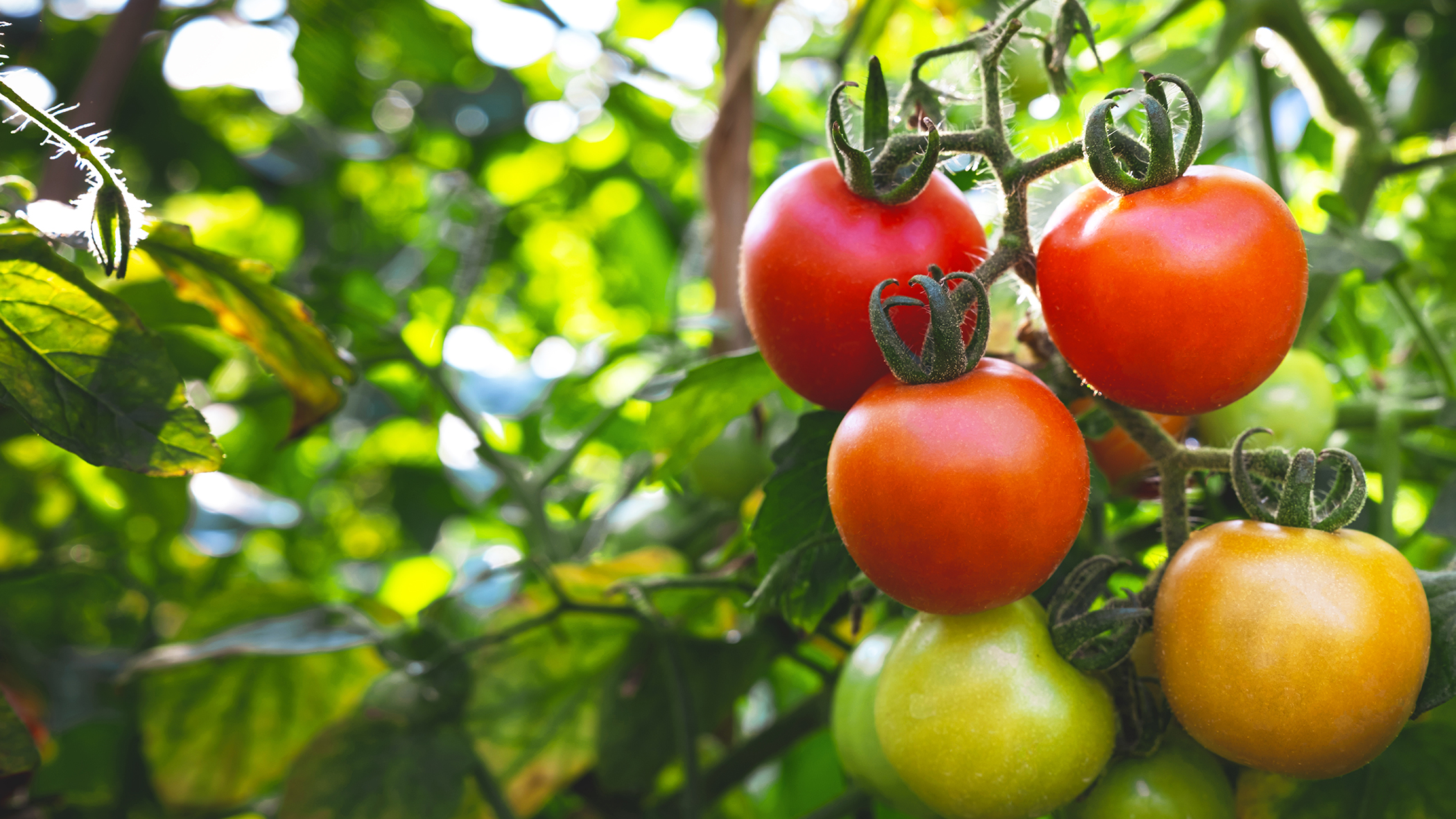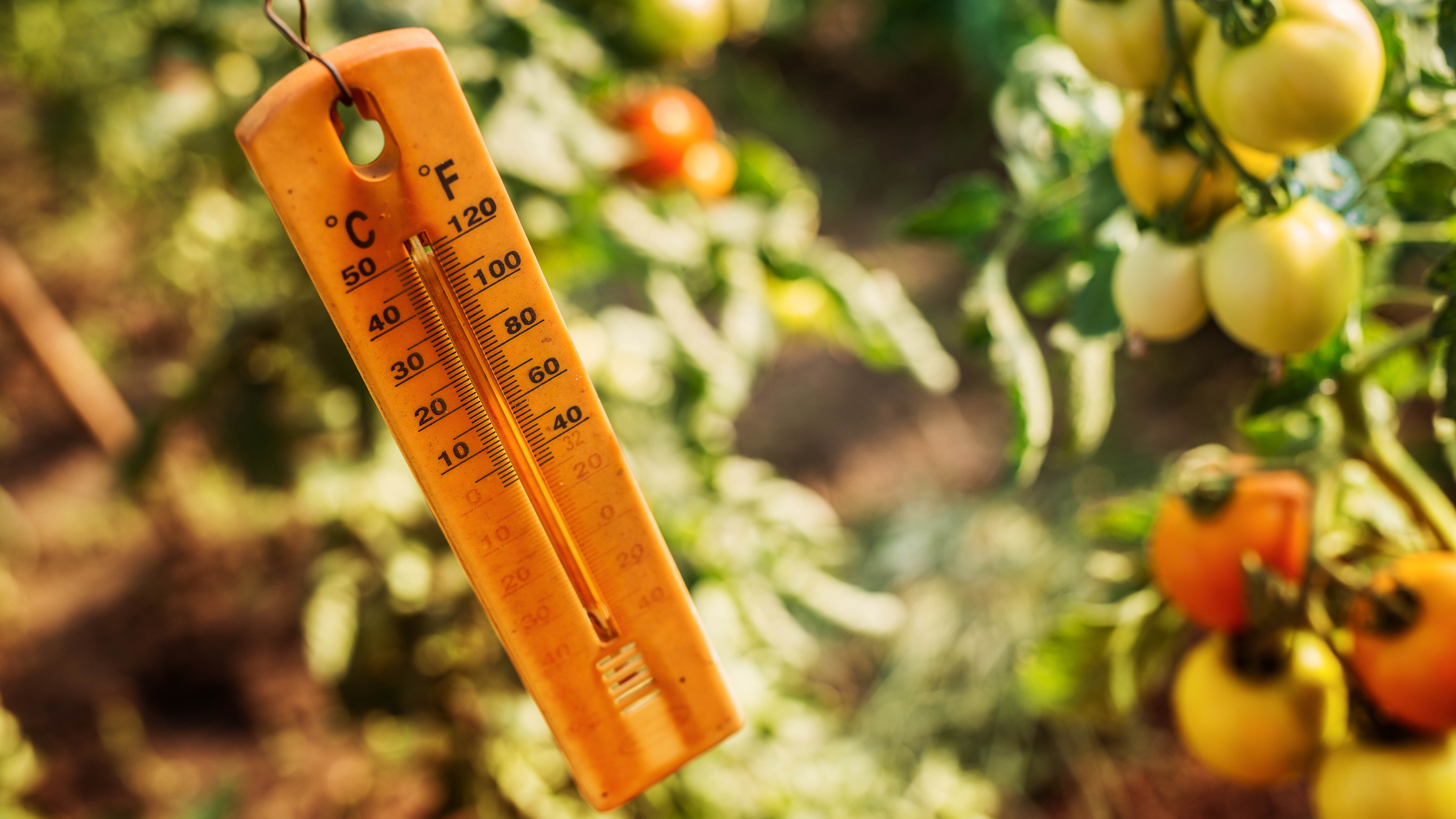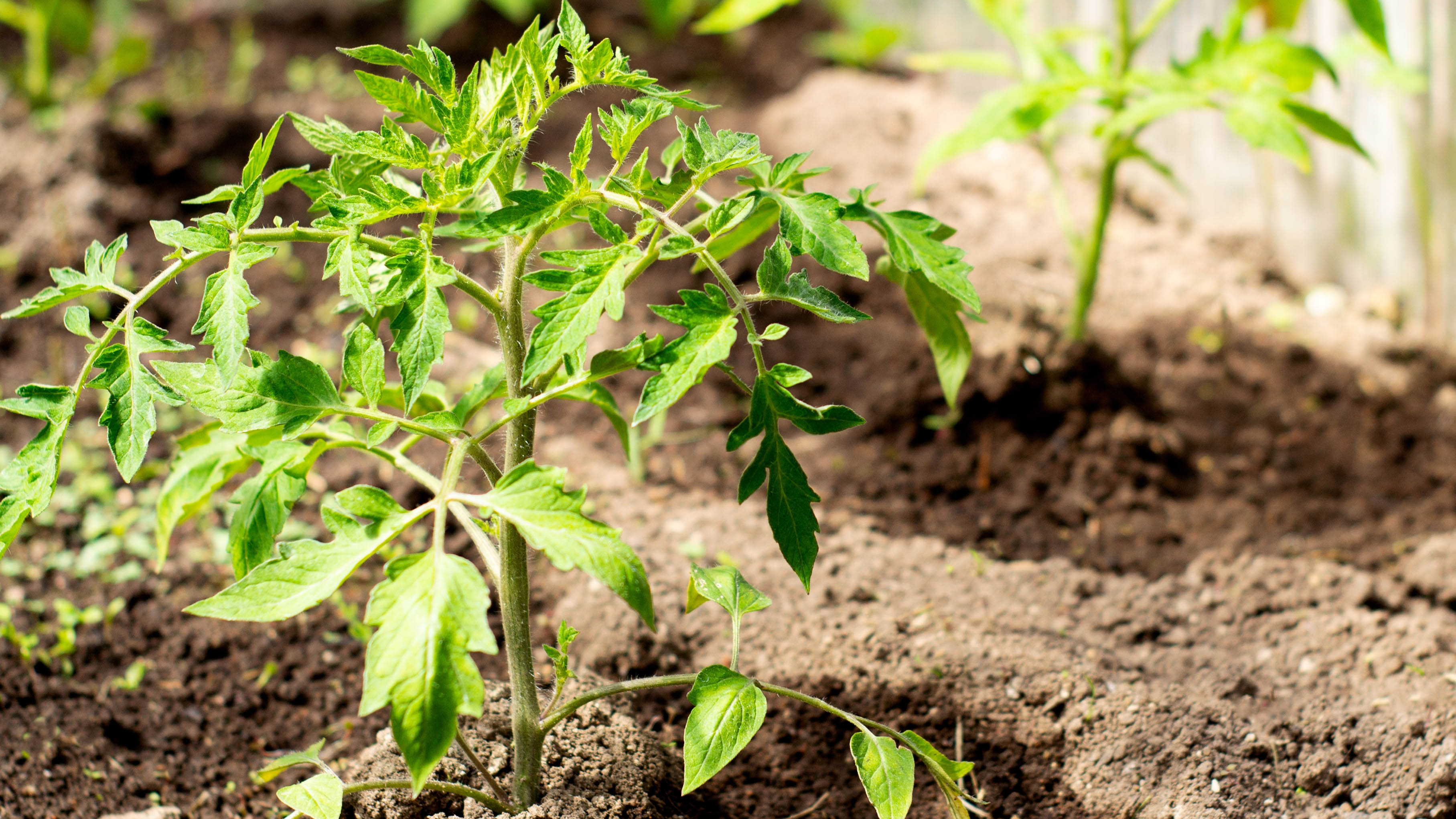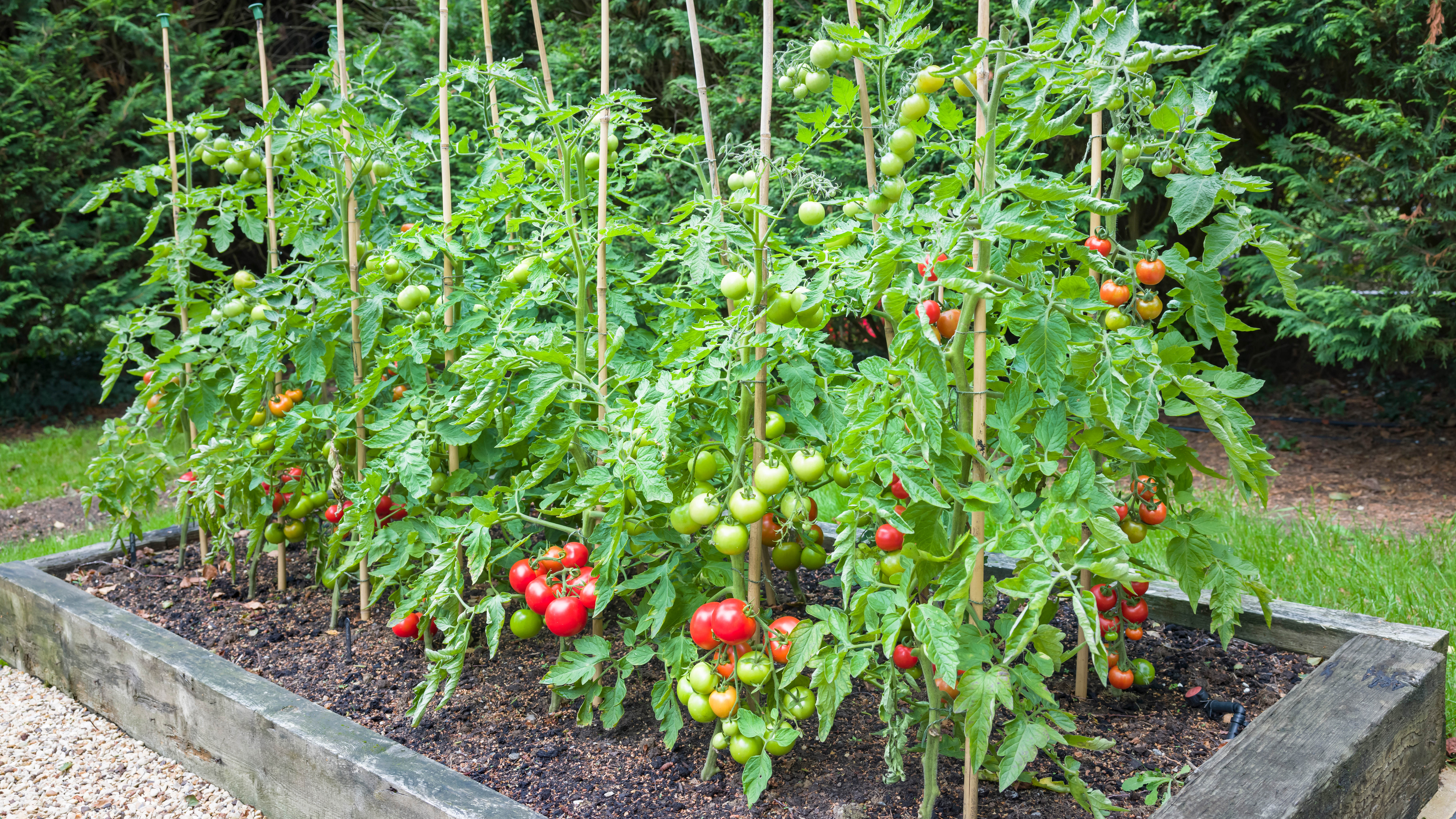3 common places you should never grow tomatoes, according to experts

Nothing is more rewarding than growing your own juicy tomatoes. This is especially the case when you can easily pick fresh, homegrown fruit straight from the vine onto your plate.
But while it might not seem like rocket-science to grow tomatoes from seeds or tomatoes in pots, there are some common mistakes when growing your own tomatoes.
One mistake is growing tomato plants in the wrong location, resulting in stunted growth, unhealthy soil and a smaller harvest.
Luckily, we’ve got our gardening experts at hand to share the worst areas to plant tomatoes, and top growing tips.
These garden gloves are made of nylon and nitrile and come in three sizes — small, medium and large. They offer excellent non-slip properties, are comfortable around the wrist, breathable and machine washable. At Tom's Guide, we recommend them as the best overall gardening glove.
1. Low light areas

If you’re wondering why your tomatoes are not thriving as they should, they might be in need of much needed sun.
Ideally, tomatoes need around six to eight hours of sunlight a day, otherwise this will result in slower growth and less fruit.
“Placing them in an area that is too shaded will cause leggy growth or reduce the fruit yield,” says Lindsey Chastain, homestead gardener and founder of The Waddle and Cluck.
Get instant access to breaking news, the hottest reviews, great deals and helpful tips.
“They shouldn't be planted under dense trees or along a fence or building that provides too much shade.”
If possible, place or relocate tomato plants or containers in a sunny spot where there is consistent sunlight throughout the day.
In addition, avoid planting tomatoes underneath or near large trees or buildings that will block the natural light. “Don’t plant them near big trees or fences that block the light,” adds Sara Rubens, certified garden coach and founder of www.SeedtoSanctuary.com.
“A sunny spot that gets a full day of light is ideal, especially one that’s a little protected from strong wind. A top tip is to start with strong plants and bury them deep—tomatoes grow extra roots along their stems, which helps them get stronger. Plus, give them something to climb, like a cage or trellis, to keep the fruit off the ground and improve airflow.”
Extra support for vines is ideal if you have windy conditions, and will protect the stalks from bending or breaking.
Discover the 3 best ways to trellis tomatoes for an abundant crop.
In soggy or compacted soil

Another reason why your tomatoes are not growing is down to the quality of soil.
Generally, tomato plants require well-draining soil instead of clay soil, to avoid diseases or blossom root rot caused by lack of calcium.
“Tomatoes shouldn't be planted in soil that drains poorly like clay heavy soil,” agrees Chastain. “Without proper draining you can be dealing with root rot, fungus, mold, or stunted growth.”
This also applies to certain areas in your yard that can get flooded easily from rainy weather conditions.
“Also, stay away from spots where water tends to puddle after rain, because soggy soil can cause root rot and bring in pests,” adds Rubens.
“They do best in loose, rich soil that drains well—think composted garden beds or raised beds. If your soil’s not great, containers work too, just make sure they have drainage holes. Adding compost or aged manure helps give them a nutrient boost.”
Similarly, tomato plants will struggle to survive in hard or compacted soil, as these create poor drainage, affecting growth.
“Hard, compacted soil is another issue—it makes it tough for roots to spread out and absorb nutrients.”
If you want to avoid overwatering your soil however, check out our guide on how often you should water tomato plants and when you do it.
3. Planting in crowded spots

If you have a small backyard or prefer to plant everything in one area, this is bad news for tomatoes.
This is due to the restriction of airflow getting to your tomatoes, which is essential for plant growth.
Generally, always space them apart (up to 3 feet between plants is ideal), keeping them away from nearby plants if possible. Not only will these end up competing for space as they expand roots, but will leave tomato plants at risk of bacteria or disease.
“It makes it tough for roots to spread out and absorb nutrients,” states Rubens. “And if you grew tomatoes or other nightshades (like peppers or eggplants) in that same spot last year, pick a new location to avoid soil diseases building up.”
In addition to ensuring healthy soil, don’t forget to fertilize your plants to give them an extra nutrient boost. “Fertilize based on your soil’s needs,” advises Isabel Branstrom, Product Development Manager at PanAmerican Seed.
“A soil test can help you understand what soil you have, what nutrients are already present, and what would be ideal to apply when growing tomatoes.
In general, try to avoid adding too much Nitrogen because that can lead to more foliage growth versus fruit development.
Also, make sure your fertilizer does not contain any sort of herbicide. If growing in a container, many media mixes for containers already come with a slow release fertilizer mixed in.”
For more care tips, check out these reasons your tomato plant is wilting — and how to fix it.
More from Tom's Guide
- How often should you water tomato plants?
- 7 ways to get more fruit from a tomato plant
- 3 best ways to trellis tomatoes for an abundant crop

As the Homes Content Editor, Cynthia Lawrence covers all things homes, interior decorating, and garden-related. She has a wealth of editorial experience testing the latest, ‘must-have’ home appliances, writing buying guides and the handy ‘how to’ features.
Her work has been published in various titles including, T3, Top Ten Reviews, Ideal Home, Real Homes, Livingetc. and House Beautiful, amongst many.
With a rather unhealthy obsession for all things homes and interiors, she also has an interior design blog for style inspiration and savvy storage solutions (get rid of that clutter!). When she’s not testing cool products, she’ll be searching online for more decor ideas to spruce up her family home or looking for a great bargain!
You must confirm your public display name before commenting
Please logout and then login again, you will then be prompted to enter your display name.

